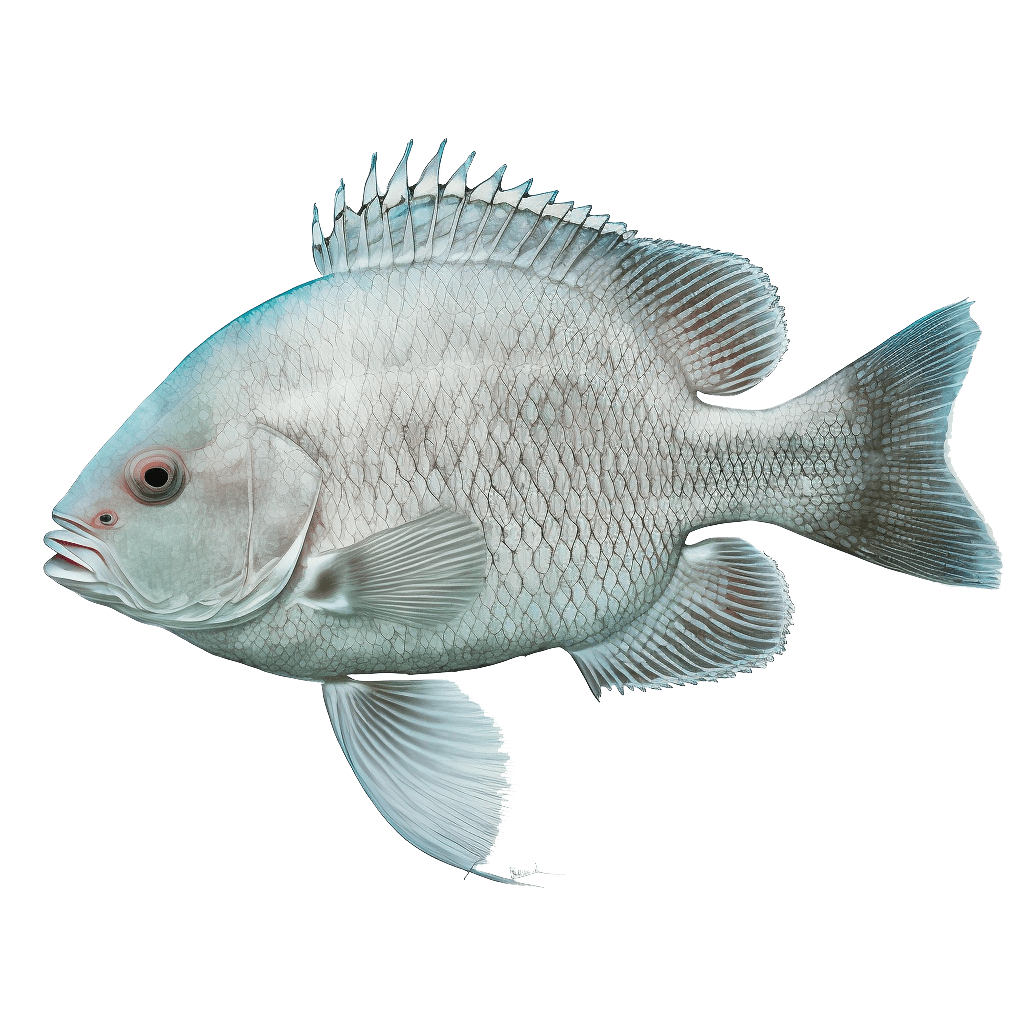
White Tilapia, also known as Oreochromis niloticus, is a freshwater fish species that is native to Northern Africa and Israel, although it is now found in numerous other places as well. This large fish can grow up to 24 inches in length and exceed 11 pounds, making it popular among aquaponics and aquaculture enthusiasts. The species is a popular food fish and was even well-known as a food fish in Ancient Egypt, as depicted in paintings and sculptures of the day.
White Tilapia is a group of species that includes several subspecies, such as Oreochromis aureus, Oreochromis niloticus, Oreochromis mossambicus and many others. The fish are fast-growing and produce good fillets, making them popular for aquaculture and food production. They are tolerant of brackish waters and lower temperatures ranging from 65˚ to 98˚ F.
White Tilapia are mouth brooders, with the female collecting and holding the eggs in her mouth until hatching. Brood sizes range from 100 to 2,000 eggs depending on the size of the female. Tilapia reproduce within just a few months after birth.
White Tilapia in Aquaponics
White Tilapia can be used in aquaponics systems, where they provide a valuable service by converting fish waste into nutrients for plants. In return, the plants help to filter the water for the fish. Here are some pros and cons of raising White Tilapia in aquaponics:
Pros to using White Tilapia in Aquaponics:
- Fast growth: White Tilapia grow quickly and can reach market size in a relatively short amount of time, making them a good choice for those looking to raise fish for food.
- High protein: White Tilapia are a good source of protein and have a mild, white meat that is popular with consumers.
- Hardy fish: White Tilapia are hardy and can tolerate a wide range of water conditions, making them a good choice for beginners.
- Efficient use of space: White Tilapia can be raised in high densities, which makes them an efficient use of space in an aquaponics system.
- Fertilizer: White Tilapia produce a lot of waste, which can be used to fertilize the plants in the aquaponics system.
Cons to using White Tilapia in Aquaponics
- Warm water: White Tilapia prefer water temperatures between 25 and 30 degrees Celsius (77 to 86 degrees Fahrenheit), which may require additional heating in cooler climates.
- Susceptible to diseases: White Tilapia can be susceptible to a variety of diseases, which can be a concern in crowded aquaponics systems.
- Require high-quality feed: White Tilapia require a high-protein diet to grow quickly, which can be expensive.
- Require good water quality: White Tilapia require good water quality with plenty of oxygen, which may require additional equipment or maintenance in some aquaponics systems.
- Invasive species: Like Nile Tilapia, White Tilapia can be an invasive species in some areas, so it’s important to make sure they are legal to raise in your region and to take precautions to prevent them from escaping into local waterways.
Overall, White Tilapia can be a good choice for aquaponics systems, especially for those looking to raise fish for food. They are hardy and can provide a valuable source of nutrients for plants while efficiently using space in the system. However, it’s important to take into account the cons and to ensure that proper care is taken to prevent the species from becoming invasive in local waterways.




Leave a Reply